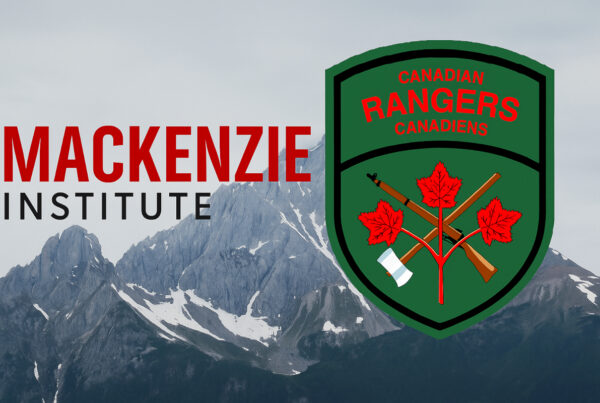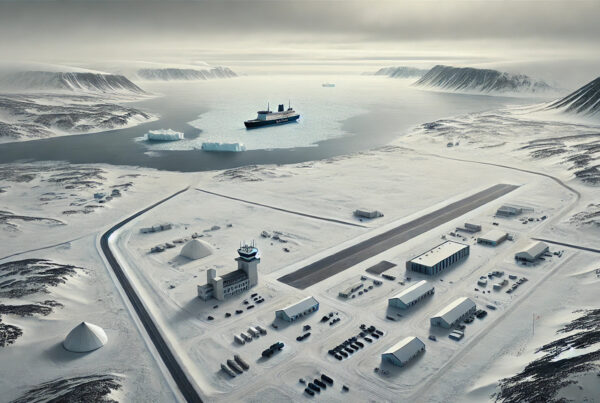Military deterrence and the arms race
(A First Article in a Five Part Series)
Maxim Starchak is currently a Fellow at Centre for International and Defence Policy at Queen’s University in Kingston, Ontario, Canada. He has a PhD in Political Science, and an MA in International Relations from the Irkutsk State University in Russia. Please see a more complete biography at end of the article
After the legally questionable annexation of Crimea, beginning with the current round of the conflict in the south-east of Ukraine and Russian operations in Syria, cooperation between Russia and NATO has been cooling down. Aerial reconnaissance along with incidents in the air have become commonplace according to common news reports.i The term “Cold War” has sounded again.
Now the possible danger for the world community to suffer from nuclear armed conflict between the two governments has become more realistic. However, conflict flares up not so much as a result of military moves of both sides, but because the relationship is based on past agreements which are being passed over and ignored by the reality of the present. Only realistic appraisal about what is really happening between Russia and NATO will secure the word community from a military confrontation with each other.
Prompt capture of the main administration and infrastructure facilities of Crimea by alleged Russian soldiers, then holding the referendum, subsequent attachment of the peninsula to Russia, followed by active military support of separatists of Lugansk and Donetsk regions by Russia have divided relations between Russia and NATO into “before” and “after”. Things, which Moscow considered as the natural defense of “the Russian world”, were considered by NATO as aggression, disrespect of territorial integrity, and violation of international agreements.ii
The nearest neighbors of Russia, the three Baltic states in particular, all NATO members with significant Russian-speaking population minorities, began to be concerned that a similar Russian operation may be applied to them.iii NATO, as a guarantor of the European security, had to show the organization members and its allies the inadmissibility of a military aggression in Europe. A BBC show, in which Latvia became the next goal of Moscow and the place of the beginning of a nuclear war between Russia and NATO, increased the level of anxiety.iv
The NATO Council, since 2014, has stopped all civilian and military cooperation with Russia and kept communication only at ambassadorial level. NATO’s Parliamentary Assembly has joined other Western countries in a sanction policy and deprived Russia of the status of the associate member. Free access to the headquarters of the alliance was closed for the Russian representatives to NATO as well. An action plan detailing measures which would be required for protection from threats coming from Russia was taken at the NATO summit in 2014 in Newport (Wales). An immediate reaction force with up to 5 thousand personnel located in bases of seven West European countries of the alliance was created as the NATO Response Force. Also it was decided to create the Very High Readiness Joint Task Force having in its structure five maneuverable battalions with some forces ready to act in two-three days.v
Since the summit in Wales, NATO has established small command cells (NATO Force Integration Units) in the Baltic States, Poland, Romania, and Bulgaria (about 40 people each). The Alliance also has increased staffing (from 200 to 400 people) of the headquarters Multinational Corps North-East in Poland. In addition, NATO accepted Polish and Romanian offers to use their national division-level commands in times of crisis. Both headquarters were partially filled with international personnel.vi In 2017, the alliance placed four multinational battalions, numbering from 800 to 1.200 people each, which are to be rotated every six months, in the Baltic States and Poland.vii In 2019, Poland announced the creation of a ‘new base’ to be called Fort Trump according to many recent news reports.
NATO says these actions are aimed at strengthening of collective defense and do not aspire to a new arms race or the Cold War.viii Responding to critical Russian comments, NATO says its actions remain within the Founding Act of 1997. The additional forces were deployed temporarily, and permanent forces consisting of 40 people do not count as a significant force.
But at the same time, the decision to increase the defense spending to the level of 2% of GDP by 2024 was taken by NATO members. The proposed increase was explained as the alliance has cut back expenses in this sphere by 20% previously while Russian increased ones by 50%.ix To some, the increase of defense outlays up to the target level of GDP without considering the context of the economic growth and nation’s economic budget is reminiscent of the spirit of Cold War.
Nonetheless, the limited military response by NATO angered Russia. Hope that such seemingly small steps would be accepted with calm and not escalate tensions failed. (Russia needs to clearly calculate the potential threats to Russia’s military security from increasing NATO forces in Europe – author). Each of them should have a sufficient adequate response,x Vladimir Putin said in September 2014. Russia answered NATO infrastructure moves on the border with Ukraine by troop reinforcements in Crimea, the Arctic and Kaliningrad. In 2014, four aviation regiments were deployed on the Peninsula. In 2014–15, an air defense system with guided missile system Pancir S-300PMU was created in Crimea. Russian force grouping was strengthened by more than 200 pieces of new military equipment, including 50 combat ships and submarines, 30 aircraft, and 140 units of the newest armored military hardware.xi In 2017-18, a new air assault battalion and four battalions of the S-400 Triumf anti-air missile complex were deployed in Crimea.xii
Reinforcements of military bases of the Russian Federation in the Arctic started in 2014. Joint strategic command ‘Sever’, consisting of the 45th Air Force (created in 2015) and Air Defense Army of the Northern Fleet, as well as two arctic ground wings, was formed. Six military bases were developed on Arctic islands and the polar mainland of Russia. In 2013-2017 in the Russian Arctic was built 425 objects, which housed more than 1,000 soldiers, special weapons and equipment.xiii
Since 2015, the strengthening of the Kaliningrad military group began with the creation of the 11th army corps. In 2016, the corps of coastal and land forces of the Baltic Fleet was formed in the Kaliningrad region. In 2016-2018, the Baltic Fleet was replenished with 8 SU-30SM fighters and a Karakurt-class corvette (22800 project).xiv In 2018, Iskander-M missile systems were permanently deployed in the Kaliningrad region. In 2019, the Kaliningrad region was replenished with a regiment of the S-400 Triumf anti-aircraft weapon system and a regiment of T-72B tanks. It is also known that a new aviation division is being created.xv Expansion of NATO military operations in the area can be answered by the further Russian forces ‘thickening’ in this region. It is known that a new aviation division is also being created.xvi
On the border with Ukraine in 2015, Russia concentrated a military grouping, with more than 53,000 troops, 420 tanks, up to 1920 armored combat vehicles, more than 500 artillery systems, almost 200 artillery rocket systems, more than 380 combat aircraft and almost 130 helicopters.xvii The increase of Russian military presence against the border with Ukraine is not a temporary military step, but a strategic decision in response to a strengthening of NATO in Eastern Europe. At the end of 2016, two new divisions were created in Russia’s Western Command and one in the South. Each division is proposed to have not less than 10 thousand soldiers. Construction of garrisons was undertaken, and by the end of 2017 the transfer of more than 2,000 new and upgraded pieces of military equipment to the Western Command had been completed.xviii
In response to increased Russian military activity, NATO confirmed a new concept of ‘reaction forces’ in June 2015, increasing personnel from 13 to 40 thousand people. In particular, according to the Russian Ministry of Defense, since 2012 the number of NATO military contingents stationed at the Western borders of Russia has tripled. Also, the defense ministers of the NATO alliance expanded the role of the general headquarters of Alliance’s United Armed Services in Europe in order to increase combatant capability and operational deployment. To six the NATO units already in Eastern Europe, it was decided to add two more in Slovakia and Hungary.
In addition, in February 2016 the Pentagon took a decision to make its own significant contribution to deterrence against Russia; by placing an armored brigade of 4.200-4.500 troops on a rotational basis into Bulgaria, Estonia, Lithuania, Latvia, Poland, Romania and Germany. The US planned investments of $ 163 million in maneuvers activation and to place 250 tanks, armored vehicles and other military equipment, and ammunition warehouses in Eastern Europe to support military exercises.xix In general, the White House approved the allocation of $ 3.4 billion for the budget of European Reassurance Initiative. This funding will enhance the prepositioning of forces and their support; it will activate the rotation of armed forces, as well as help to carry out more activities on combat training and exercises, while ensuring the presence of a larger number of military equipment and improved infrastructure.
The arms race between NATO and Russia has an impact on the modernization of nuclear and ballistic weapons as well. In Eastern Europe, elements of the US global missile defense system are appearing. Romania and Poland positioned top line American “Aegis Ashore” anti-missile systems.
In response to this, Russia has been developing new ballistic missiles with systems capable of overcoming anti-missile defenses since 2011. For example, while developing a new ballistic missile “Avangard” and “Sarmat” missile systems, the Russian military stated that such development is a response to the deployment of US missile defense in Europe.xx The United States, concerned about the modernization of Russian nuclear weapons, proposed to upgrade their own ones. In particular, the United States will need to spend 1.2 trillion dollars over the next 30 years to modernize and maintain its nuclear weapons, according to a new government estimate.xxi
Mutual threats prompt improved technical and qualitative development of military deployments and strategies. The threat posed by Russia made the NATO members change relevant legislation, which now allows quick movement of military equipment from one country to another as well as collection of data about the Alliance members’ infrastructure which is suitable for military use. Conversely, the reinforced perception of the ‘enemy image’ in the West in 2013, prompted Russia to increase equipment of the Armed Forces with modern weapons by 3.8 times – from 16% to 61.5%; strengthen the coordination between departments; increase individual combat training indicators (such as total flight experience and operational time spent) more than two times; and increase the number of annual combat training events by six and a half times – up to 18 thousand.xxii
Such military responses were not one-time actions, but have turned into a lasting policy of deterrence and arms race. For more than two years, additional forces and equipment have been placed on both sides of the border of Russia and Eastern Europe. Military budgets are growing; weapons are upgraded; and new ones of are developed and purchased. If earlier refurbishment of the Russian military was justified by obsolete equipment and a general decline of the army in 1990s, now development of the armed forces of Russia originates from the perceived necessity of strengthening the positions on western borders of the country.xxiii The US and NATO will also have to continue to meet the new challenges posed by Russia.
Both sides say they will not allow themselves to be drawn into a new arms race, provoked by the opposite side. But as we see, it has already started. In fact, both sides display their strength and confrontational intentions making their position similar to the policy of the Cold War times. The only differences are that the army and the number of arms are now smaller, but likely much more destructive than they were in the past.
Biography
Maxim Starchak, in addition to his PhD in Political Science, and an MA in International Relations, passed postgraduate courses in MGIMO (University) of the MFA of Russia, CTBTO Preparatory Commission in Vienna, Belfer Center for Science and International Affairs at Harvard University. In 2013-2015 he was a Research Fellow and Editor of the “Security Index” journal at PIR Center; also in 2013-2014 a Research Fellow at the Military Economy Department of the Gaidar Institute for Economic Policy. During 2011-2014, he was an expert at the Eurasia Heritage Foundation. In 2011- 2013, he was a Research Fellow at Institute for US and Canadian Studies and Executive Director of the Center for Strategic Estimates and Forecasts, which founded an International Expert Council on cooperation in the Arctic. In 2011 he was Editor-in-Chief of the journal “Big game: politics, business, security in Central Asia”. In 2009-2013, Expert on the “Security Index in Central Asia” project, at the Institute of Political Solutions (Kazakhstan). In 2010-2012, Head of Analytical Directorate at the Foundation for advanced studies “Bastion’. In 2008-2010, a Council Member of the Siberian Centre for security and nuclear nonproliferation. In 2007-2010, Coordinator of the Russian Youth Association for Euro-Atlantic Cooperation. In 2006-2011, Vice President, Head of the Research Group on International Security and Conflicts at Russian Political Science Association. In 2006, he was also the co-founder of Youth Department at Russian Political Science Association.
In 2013-2014, he was author and editor of PIR Center White Paper “Towards nuclear disarmament: NTP article VI and Implementation of the 2010 Review Conference Decisions”. In 2014-2015, Executive Editor of the
Conference Proceedings of III & IV Moscow Conference on International Security of the Ministry of Defence of Russian Federation. In 2014-2015, Working Group Member from Russia for preparation of the BRICS Think Tanks Council report (section “international peace and security).
Since 2010 he has been a permanent member of the Expert Council of the annual all-Russian essay competition on NATO-Russian relations of the NATO Information Office in Moscow and Information Centre for International Security. He has received academic and public awards and grants from: MGIMO-University, Moscow State University, Institute of Oriental Studies, JSC “Rosatom”, Eurasian Development Bank, Russian Political Science Association, Federation for Peace and Conciliation, National Committee on BRICS Research, NATO Information Office and EU Delegation in Moscow.
Current Interests/Research:
· Russian defence policy;
· NATO-Russia relations; and
· nuclear disarmament and arms control.








